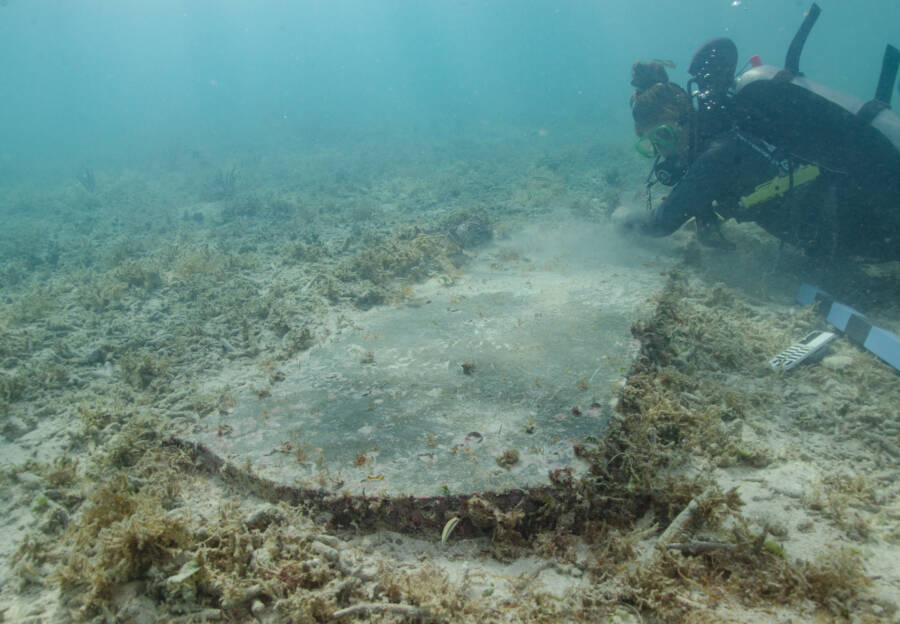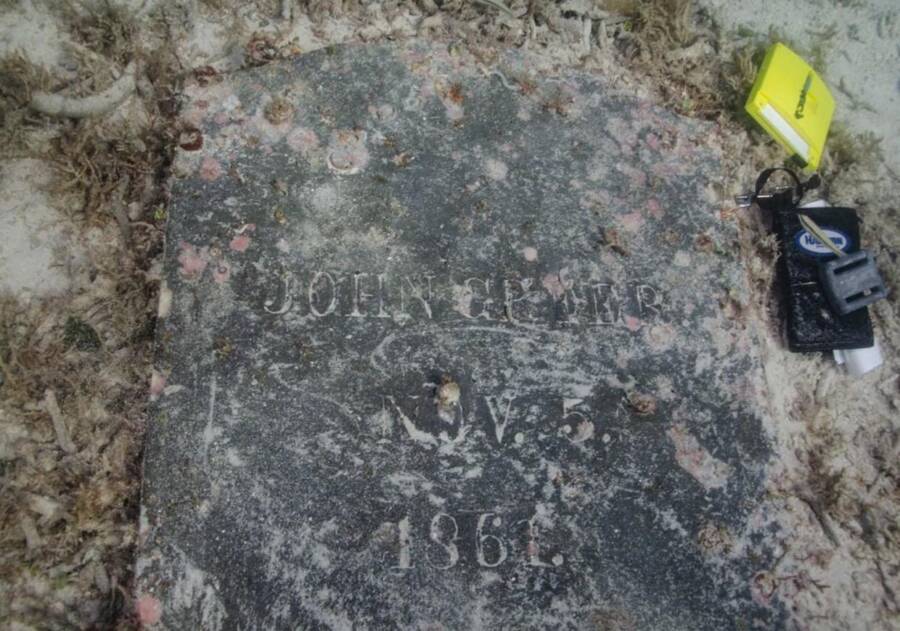The hospital had been used to house yellow fever patients before falling into disuse in 1900, then gradually slipping below the waterline in Dry Tortugas National Park off the coast of Florida.
C. Sproul / National Park ServiceA frogman examines one of the drown gravestone .
For more than 100 eld , the sparkling turquoise waters of Dry Tortugas National Park in the Florida Keys have concealed a grim historical relic . Beneath the waves , archaeologists late notice the corpse of a submerged 19th - century quarantine hospital and adjoining burial ground .
According to astatement from the National Park Service , park staff , alongside members of the National Park Service ’s Submerged Resources Center , the Southeast Archeological Center , and a University of Miami alum bookman , made the find while conducting a study in August 2022 .

C. Sproul/National Park ServiceA diver examines one of the submerged gravestones.
On a submerged island near Garden Key , they chance upon the remains of the hospital , which was in all probability used for people hurt from yellow fever and a necropolis identify as Fort Jefferson Post Cemetery . There , submerged archeologist have also identified one of the Graf , which they say belonged to a laborer named John Greer . consort to his headstone , Greer died on November 5 , 1861 .
C. Sproul / National Park ServiceThe headstone of John Greer , which states that he die in 1861 .
The Guardiannotes that Greer ’s grave was made with a large slab of greywacke , which is the same textile used on the first level of nearby Fort Jefferson , a former U.S. military fort off the coast of Florida .

C. Sproul/National Park ServiceThe headstone of John Greer, which states that he died in 1861.
For archaeologist , it ’s an exciting facial expression at the orbit ’s storied history .
“ This challenging find high spot the voltage for untold story in Dry Tortugas National Park , both above and below the water , ” said Josh Marano , a nautical archeologist for the South Florida National Parks and project director for the survey .
Indeed , the urine of Dry Tortugas National Park play a small yet entrancing function in American story . In the early nineteenth century , the National Park Service writes that the water and island palisade Fort Jefferson were used for a “ naval coaling outpost , beacon light station , naval hospital , quarantine facility , ” and “ for safe harbor and military training . ”

National Park ServiceA watercolor painting depicting a quarantine hospital and cemetery on an island in the Dry Tortugas.
The gold rush in population on these island also contribute to a proliferation of diseases , including yellow fever , which is spread by mosquito . Thus , several quarantine hospital were constructed to incorporate the malady before being abandon in 1900 .
National Park ServiceA watercolor painting depicting a quarantine hospital and cemetery on an island in the Dry Tortugas .
Earlier , Fort Jefferson was also used as a prison house during the Civil War . Then , it held a phone number of infamous prisoner , including Dr. Samuel Mudd . After John Wilkes Booth assassinated Abraham Lincoln in April 1865 , he sought aid from Mudd for his broken leg . Because Mudd did n’t account Booth to the self-assurance , he was afterward found guilty of assist and conspiring in a murder and was sentenced to sprightliness in prison at Fort Jefferson . Mudd was subsequently pardoned by President Andrew Johnson in 1869 .
But Mudd is just one of many figure from Fort Jefferson ’s past times , and archaeologist are bright that the discovery of the cemetery and quarantine hospital can avail cast off sparkle on other , lesser - make love stories .
“ Although much of the story of Fort Jefferson focuses on the fortification itself and some of its ill-famed prisoners , we are actively working to separate the story of the enslaved mass , woman , children , and civilian manual laborer , ” Marano explained , according to the National Park Service .
He and his squad be after to learn more about the other submerged graves near the quarantine infirmary . Though just Greer has been identified for now , historical records advise that dozens of mass , include military members and civilians , were buried at Fort Jefferson Post Cemetery .
The stories of their biography — and end — will avail shake off luminousness on this curious piece of American story . For almost 100 years , it ’s been obscure beneath the water . But archaeologists hope to institute the story of the Fort Jefferson Post Cemetery and the nearby quarantine infirmary to the surface .
After read about the submerse quarantine hospital and cemetery discovered off the seacoast of Florida , discover the story of the bubonic plague quarantine center onPoveglia Island . Then , step inside some of the humanity ’s most disturbingabandoned hospital .